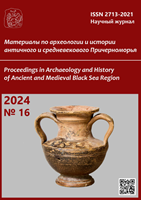Significant results of archaeological research the past 30 years on the Mongol invasion (1241—42) in Medieval Hungarian Kingdom
Significant results of archaeological research the past 30 years on the Mongol invasion (1241—42) in Medieval Hungarian Kingdom
Author(s): Szabolcs Rosta, Gyöngyi Gulyás, Zsolt Gallina, István Pánya, Attila TürkSubject(s): Archaeology, Cultural history, Military history, Political history, Social history
Published by: Нижневартовский государственный университет
Keywords: archaeology; Hungary; Mongol invasion; Middle Ages; treasures; eastern-type weapons; defence ditch system; geophysical methods;
Summary/Abstract: The article presents the latest results of archaeological research into the events of the Mongol invasion against the Kingdom of Hungary in the Carpathian Basin in 1241—42. Despite the wealth of written sources, archaeology could not provide any serious evidence of the events of the Mongol invasion in Hungary for a long time. However, for a long time there was no clear and reliable evidence of massacres and widespread destruction, which could be judged from the descriptions of contemporaries, often of an apocalyptic nature. The archaeology of the invasion period, the youngest field of Hungarian archaeology to become an independent discipline, is today one of the most dynamically developing fields. The full development of the archaeology of the Mongol invasion period is connected with the appearance of new sites as a result of recent targeted and planned research.
Journal: Материалы по археологии и истории античного и средневекового Причерноморья
- Issue Year: 2024
- Issue No: 16
- Page Range: 568-576
- Page Count: 9
- Language: English

